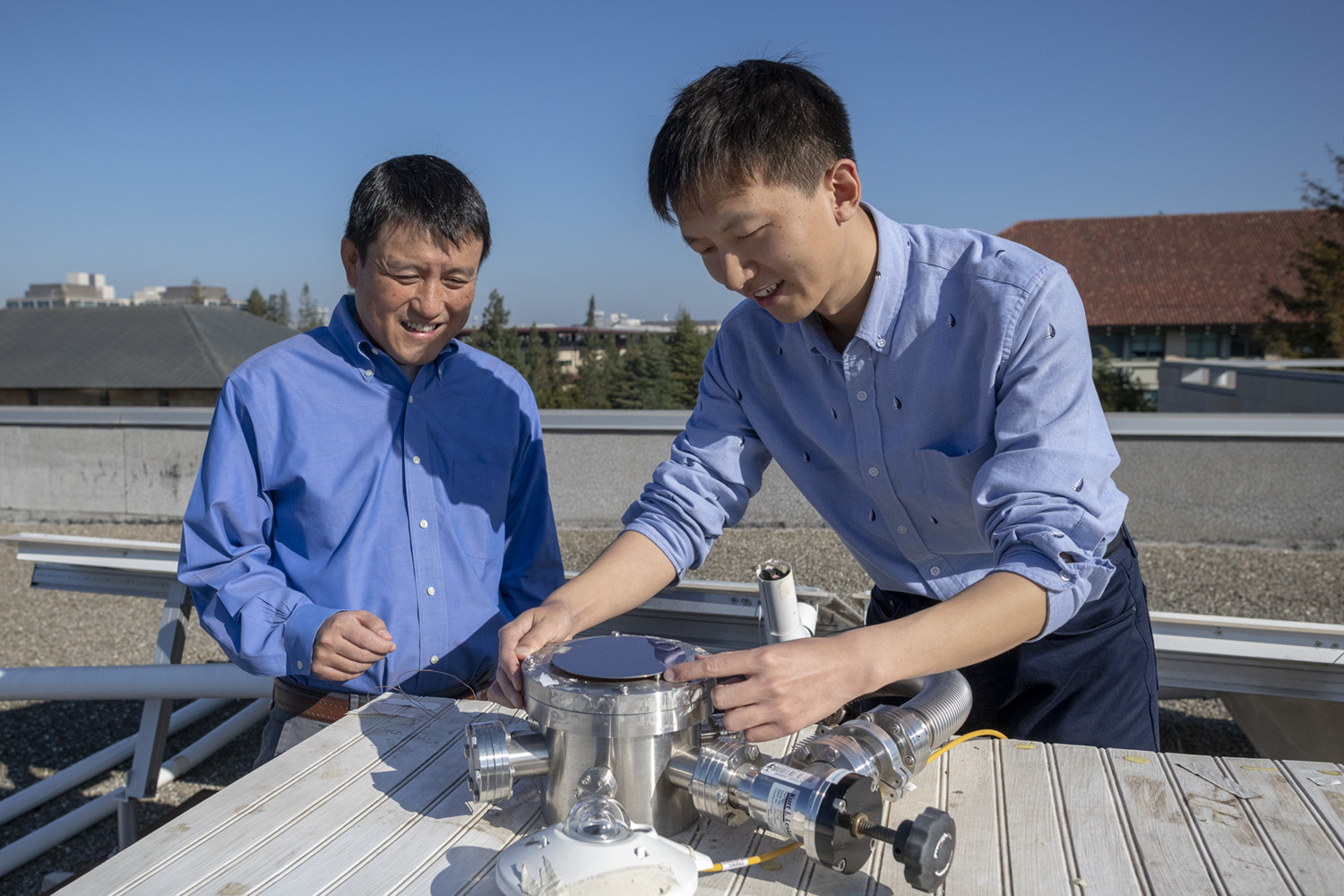Scientists at Stanford University have demonstrated for the first time that heat from the sun and coldness from outer space can be collected simultaneously with a single device. Electrical engineer Shanhui Fan’s lab has built a device that could have a dual purpose – generating electricity and cooling buildings.
Renewable energy is increasingly popular as an economical and efficient alternative to fossil fuels, but there is another powerful energy source overhead that can perform just the opposite function — outer space.
“It is widely recognized that the sun is a perfect heat source nature offers human beings on Earth,” says Zhen Chen, the first author of the study, who is a former postdoctoral research associate at Stanford in the group of Shanhui Fan and is currently a professor at the Southeast University of China. “It is less widely recognized that nature also offers human beings outer space as a perfect heat sink.”
Chen and his colleagues developed a device combining radiative cooling with solar absorption technology.
The sun-facing layer of the device is nothing new. It’s made of the same semiconductor materials that have long adorned rooftops to convert visible light into electricity. The novelty lies in the device’s bottom layer, which is based on materials that can beam heat away from the roof and into space through a process known as radiative cooling.
In radiative cooling, objects – including our own bodies – shed heat by radiating infrared light. That’s the invisible light night-vision goggles detect. Normally this form of cooling doesn’t work well for something like a building because Earth’s atmosphere acts like a thick blanket and traps the majority of the heat near the building rather allowing it to escape, ultimately into the vast coldness of space.
The researchers built a prototype about the diameter of a pie plate and mounted their device on the rooftop of a Stanford building. Then they compared the temperature of the ambient air on the rooftop with the temperatures of the top and bottom layers of the device. The top layer device was hotter than the rooftop air, which made sense because it was absorbing sunlight. But, as the researchers hoped, the bottom layer of the device was significant cooler than the air on the rooftop.
Fan’s cooling technology takes advantage of the fact that this thick atmospheric blanket essentially has holes in it that allow a particular wavelength of infrared light to pass directly into space.
While this technology appears promising, Chen believes there is still plenty of work to do before it can be scaled up for commercial use.
“If our concept is demonstrated and scaled up, the future solar cell will have two functions in one: electricity and cooling the house on hot summer days,” says Chen.






